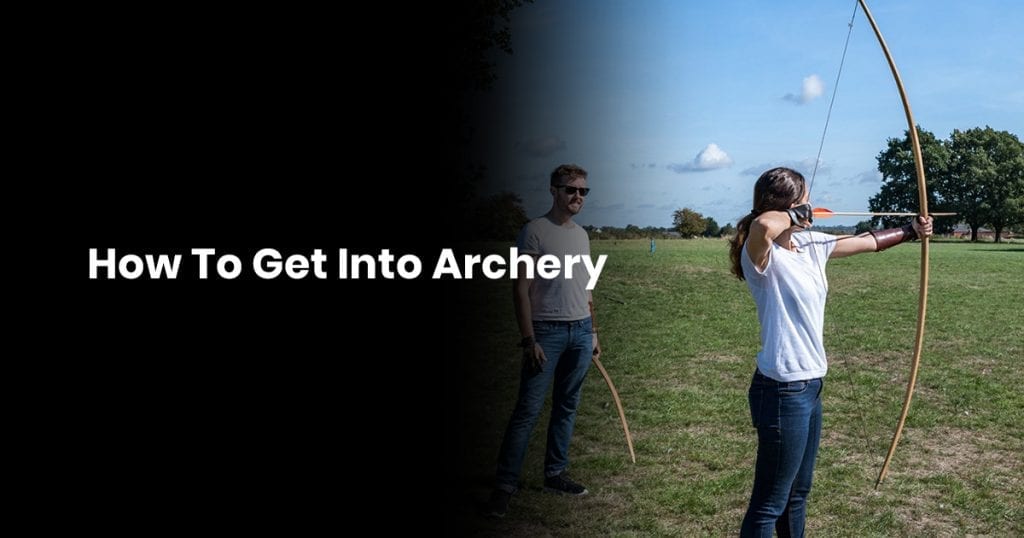Archery is power.
It’s concentration.
It’s focused will in a single shot, flying through the air at 310 feet per second, and splitting wood or sinking into a target.
Archery is awesome, but it’s daunting to those who have never had its influence in their life.
Most of the time, you find people who either practiced archery as a child and never carried it on through adulthood, or adults who want to get started due to their own interests, but never had the opportunity to do anything as a kid.
It can make you feel a bit inexperienced, and perhaps a little intimidated.
The good news is that you can pick it up at any time, because all you need is determination.
Archery communities are welcoming, the physical benefits of regularly practicing archery are astounding, and the sense of pride and accomplishment you feel from sticking your mark is immeasurable.
It’s never too late to start something that interests you, so without further ado, let’s fall forward into this comprehensive overview on getting into archery or even bow hunting.
From humble beginnings to turning it into a family sport, we’ve got everything you need to know.
When Should You Start Archery?
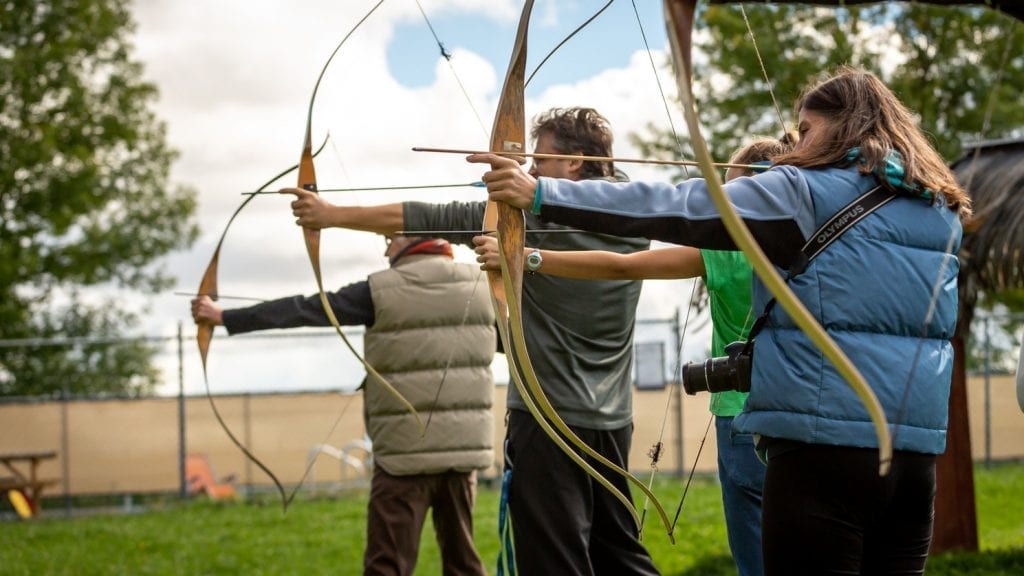
You can start traditional archery at any point, whenever it suits you to do so.
It’s not something that you’re going to get better at by being forced to do it, which is why a lot of people stop doing it as children, and don’t pick it up again later in life.
You can start it whenever you have an interest in it. Its a great way to get out and unwind.
That being said, your new bow, your first bow needs to be suitable for beginner archers, with some good luck you’ll hopefully become more like recreational archers progressing to a stronger type of bow, with more lethal wooden arrows, and longer distant target archery at full draw.
Maybe at your local archery club.
Start archery whenever you want, but begin with a traditional bow, a good bow that has a little less draw weight than what is suggested for your height and weight.
Draw weight is relative to your physical specifications, but if you don’t possess the muscle necessary to fully draw a 55 lb draw weight bow back (which is a pretty high draw weight), then it’s not going to do you any good to start here.
Start small. If your body weight and height suggest that you need a 45-55 lb draw weight bow, knock it down a notch and go for a 35-45 lb bow.
Alternatively, if you’re looking to keep this budget-friendly, you can get an adjustable compound bow that fluctuates between 5 lbs and 70 lbs of draw weight.
It can grow with you and your abilities, proper form comes from practice, so you don’t have to purchase multiple bows along the way.
If you’re feeling a bit nervous, that’s okay.
It’s normal anytime you try something new, but just know that the archery community is extremely welcoming and warm.
You can often find local or partially local groups that gather at archery (indoor) ranges or wide open areas on weekends, and enjoy the activity while sharing pointers with one another for the first time.
There’s nothing more effective than hands-on learning; you’ve got nothing to lose.
How do You Get Your Kids Into Archery?
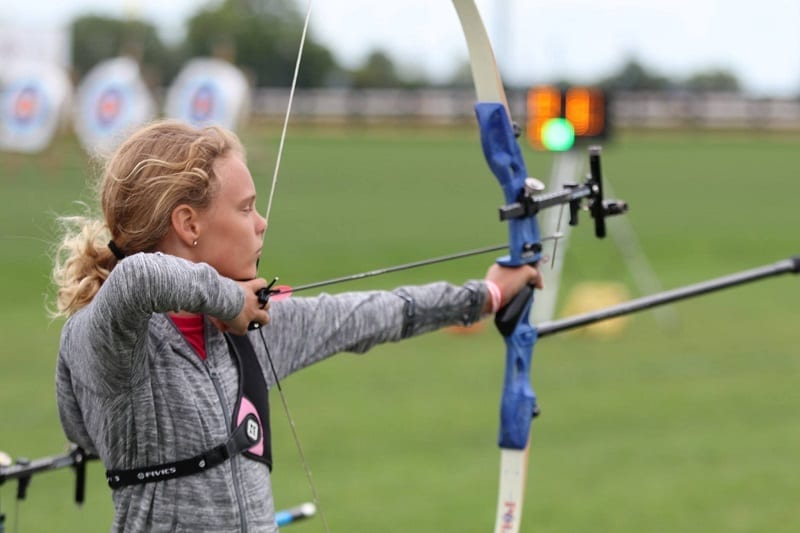
You can only get someone interested in something to a certain degree.
You can make something seem appealing and enjoyable, which can cause them to decide if they hold an interest in it or not, but you cannot force anyone to do a sport that they don’t enjoy.
It’s just going to build discontent for that activity, even if it’s not directed at the activity.
Introduce them to archery, and see what they think of it.
You don’t have to invest a whole lot of money to see if they’re going to like it, either.
Children’s bows usually rest around the 10-20 lb draw weight range, and are made out of wood.
You can find a standard bow and accompanying arrows for a relatively cheap price.
It’s recommended to have them try about five sessions, if it’s something they hold interest in.
Talk to them about it, and bring up the fact that if they try it, they have to give it a fair go—five sessions, one per week, and if they don’t like it they can walk away.
Children want to know that they have options (and, of course, if they’re having a hard time and want to quit beforehand, that’s up to you to handle if the situation calls for it).
On the one hand, children generally have an interest in archery because you get to shoot things.
They see it in films, video games, and probably even read it in books from time to time: archery is fun.
The flip side of the coin is that they’re going to be met with insane amounts of safety protocol before they’re shooting anything sharp at a target.
That’s why it’s recommended to have them go through five practice sessions before they make a final decision.
Benefits of Archery
Archery is actually riddled with benefits that most people don’t think of right off the bat.
There’s a lot of muscle engagement, cognitive skill building, and even some mental health benefits over long time that might get you picking up that bow before the week is over.
These are the main benefits of archery.
Hand-Eye Coordination and Good Form
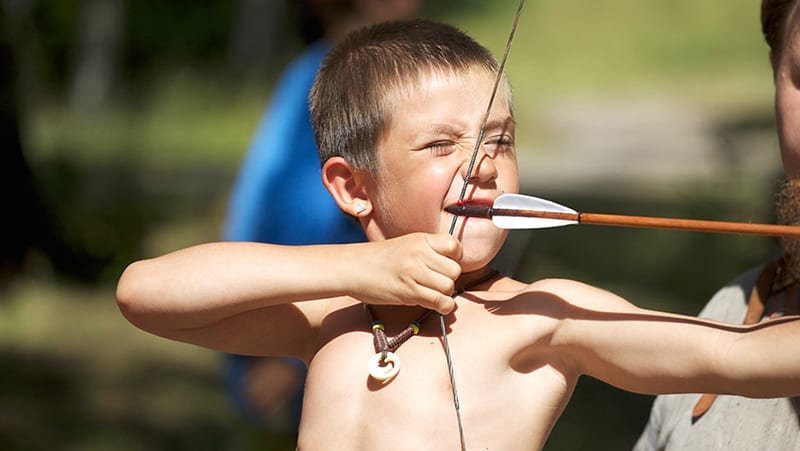
Hand-eye coordination is how precisely and accurately you’re able to maneuver your hands in accordance with the input you’re receiving from bow sight.
It’s something that you build through contact sports, video games, and of course, archery.
It’s considered a cognitive benefit to have excellent hand-eye coordination, as it will help out with most jobs, general sense of awareness and alertness, and helps you to act quickly under pressure (without messing things up).
Hand-eye coordination can directly be attributed to confidence; if you know you’re equipped to handle a situation, you’re much more likely to act accordingly when that situation arises.
Stress Relief
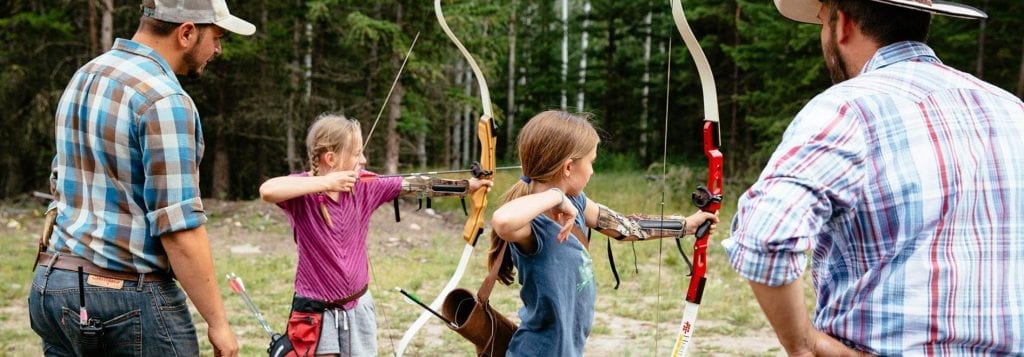
Stress isn’t something that you think; it’s something that you feel.
There’s a common misconception that it’s attributed to an emotion or overthinking something, and while that might be the cause, stress has drastic physical consequences on your body.
Stress can cause anxiety, lack of motivation, muscle tension, headaches, anger, fatigue, stomach aches, spikes in blood pressure, and the overproduction of cortisol, a stress-induced chemical that forces your body to work harder.
But how does archery help relieve stress?
Control.
You’re in full control of the outcome, from where the arrow lands to how it’s going to get there.
Nothing helps you feel more in control of anxiety and irritability (the two most common symptoms of stress) than being in control of something powerful.
Apart from that, you have so much time to provide some mental clarity to yourself.
Archery has a soothing element to it; you have to focus, control your breathing, feel the world shifting around you and work to change one small thing in it.
It sounds like a lot of hubbub, but it’s something you’ll feel once you’re out on the shooting range.
Muscle Building
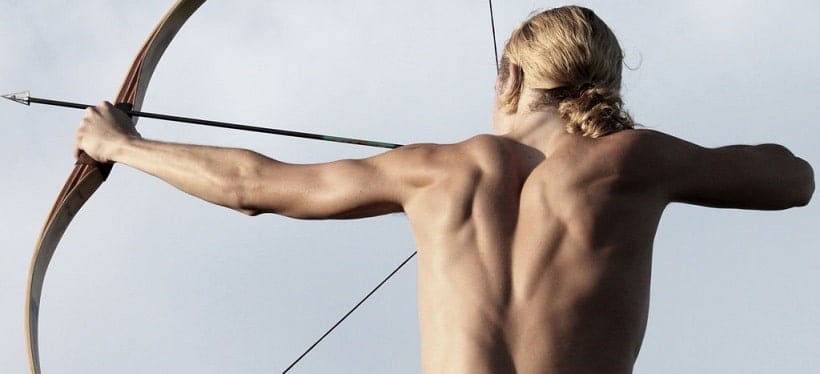
There are key muscle groups that you engage when you practice archery.
Depending on your level of involvement and how many times a week you practice, you could end up with exceptional muscle development and stability.
You engage your core, your deltoids in your shoulders, your biceps, triceps, obliques and wrist muscles all in one simple motion.
As you pull the bow up to draw the string back, everything starts being affected in a series of motions that start with your deltoids, and your core starts locking up.
Then you engage your biceps and triceps as you pull the string back, and stabilize the bow with your other hand. Lock all that together, and you’re basically doing upper body standing planking.
Then you release, and do it all over again.
A three-hour archery session where you release 60-180 arrows (Olympic standard of 3 arrows every 2 minutes), and you’ve gotten in some serious muscle-building workouts.
Burning Calories
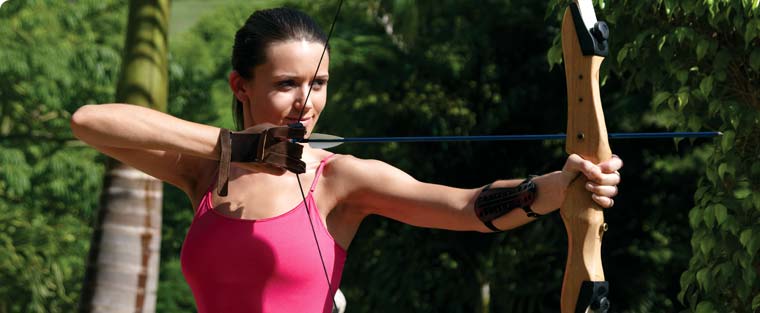
Touching on the previous topic of muscle engagement and building your core, you’ll also be burning a ton of calories while doing it.
Cardio is still the best way to burn through calories, but you can actually consider archery part strength training, and part endurance training.
You have to have a decent stamina to be able to spend hours shooting at your targets.
Caloric burn continues long after you’ve finished at the range.
There’s something called the after burn or after burner effect, where your muscles are still burning through calories for hours beyond your workout.
This usually lasts for at least four hours (average time it takes for your body temperature to return to 98.6° F, or whatever your resting temperature is), but you can continue seeing caloric burning for up to thirty-six hours after a physically demanding, strength-building activity like archery.
Channeled Energy
The nine-to-five grind.
Life.
You have any idea how much bottled-up energy you have inside of you right now, just begging to be released?
Archery is like cleansing all the bad stuff that happened throughout the week, and having some center to your life.
We all need outlets in life, and for some of us, television and video games just don’t cut it.
Everybody has their thing, and until you actually release your first arrow that successfully finds its mark, you don’t know what you’re missing.
It’s exhilarating, and something you will look forward to all week long.
Why is Archery Better Than Going to Your Local Range?
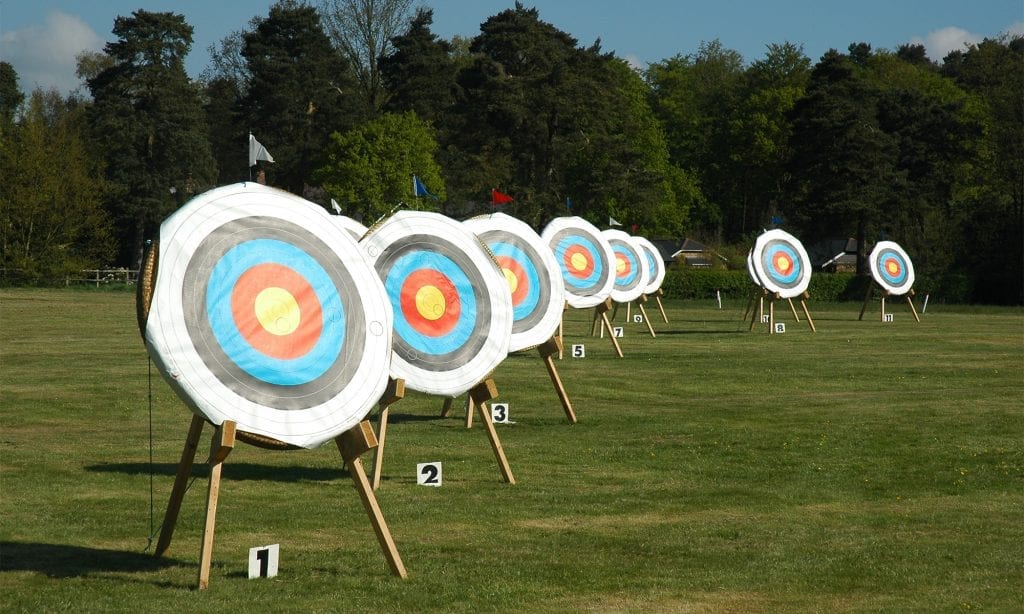
There’s two ways you can look at why it’s better than your local gun firing range.
First, it’s guns.
You either love them or you hate them, and if you hate them, archery is the closest thing you can get to firing a weapon without feeling uneasy or unsettled.
Archery is a sport, just like competitive shooting, but it takes that fear element out of the equation.
It makes some people feel a lot safer.
Second, and perhaps the best reason, is cost.
You can buy a quiver of arrows, and literally have them for years at a time.
Archery is like investing your money, versus firing a gun is like spending it.
To put it in perspective, you can spend the same amount on a bow as a firearm, but your ammunition costs are practically non-existent.
Just like a golfer finds his perfect clubs that he cares for and has for years, you too can do that with your arrows.
Cedar, wood and fiber arrows are known to last for upwards of forty years with proper care, while graphite can last for even longer.
Yes, forty years without having to spend more money on arrows.
One or two may break from extreme circumstances from time to time, but that’s an investment in fun: you don’t have to continue buying arrows if you don’t want to.
Leave your arrows out of prolonged direct sun exposure, and they’ll last a lifetime.
On top of that, you can fire at an archery target in your backyard without having to spend money at a firing range.
They don’t you in there for free, you know.
Most state laws are fairly lax on archery in your own backyard, and have a great leniency towards practicing in a wide array of areas.
You can also join an archery club for no cost to you, and meet up with other archers in specific locations to practice.
Get lucky, and you’ll make friends with someone who has a lot of acreage and allows you to shoot on their property.
Is it Hard to Learn Archery?
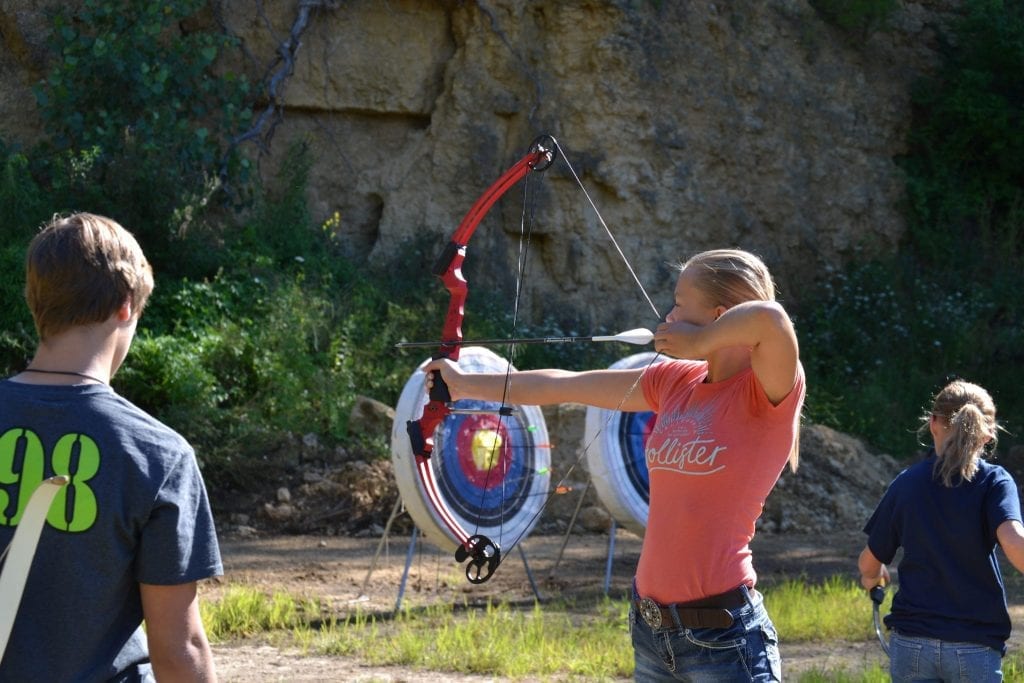
Not at all. Archery is something that you can sort of fall into.
Competitive archery?
Yeah, that’s pretty difficult, as they shoot at about 70 meters (230 ft) for Olympic targets, and competitive archers will also practice at longer ranges of 100 to 125 meters (or 323 ft to 410 ft).
But archery itself is not difficult, and it can be greatly enjoyed at any skill level.
Archery involves using a few different skills to get your form right, and once your form is correct, everything else will flow.
These are some of the things you need to learn first in archery, and they’re things you can practice in private if you’re nervous about people watching you try to learn.
- Center of Gravity:
- This is paramount to your success as an archer.
- Your center of gravity isn’t something that technically exists, yet it’s still something that you can work on (trust us here).
- Your COG is around the spot in your body where your mass is concentrated, so if you have a strong upper body and skip leg day, your COG will shift upwards.
- Same goes for vice versa
- With archery, you’re tightening your core and stiffening your body as you prepare for the shot, so you need to have a good COG for aiming purposes and general balance.
- Breathing:
- Holding your breath to the point of complete stillness is what you need to do just before a shot.
- It reduces any sway you might have from breathing, and locks you into the moment.
- You’ll feel this sense of serenity overtaking you, and you’ll land your mark.
- Clarity:
- Mental clarity is key here, and it’s one of the reasons that archery is such a cathartic experience.
- It gives you something to fully focus on, clear your mind, and build your confidence in the process.
- There’s nothing quite like landing your mark after you’ve cleared your mind.
- Light Muscle Building:
- As we talked about earlier, you build on your core, arm, shoulder blades and deltoid muscles from doing archery.
- Nobody complains about getting fit while doing something they love, you know?
Archery requires interest before it’s going to be easier.
Yes, hitting a target from fifty feet away isn’t exactly easy, but getting started with archery and learning it isn’t hard.
You focus on form first, then draw weight and strength, and you’ll land your targets in no time.
Don’t make it difficult on yourself by setting the target too far (we’ll cover target length in a moment).
How to Train Archery if You’re a Beginner
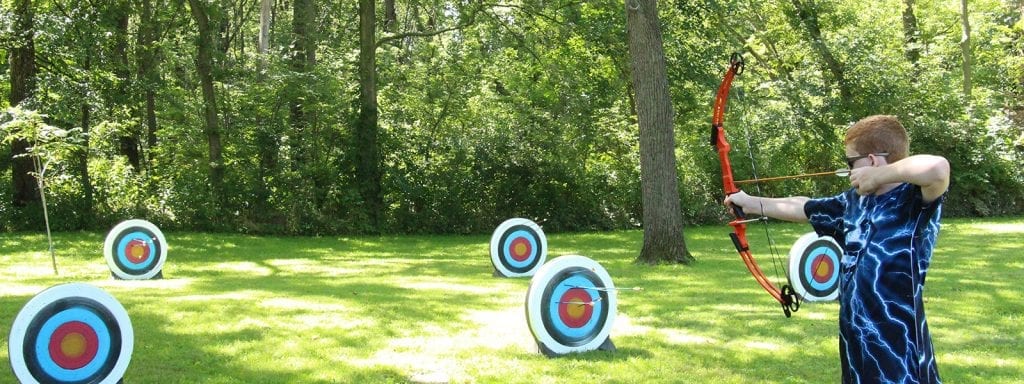
First thing’s first: you need to pick a bow type to get started with.
You should choose either a recurve bow or a compound bow to begin with, because longbows require a lot more strength and precision later on.
Compound bows are technically easier to use.
They’re those modern bows you see with wheel-like pulleys on the top and bottom of the limbs.
Recurve bows require a bit more strength to assert yourself with, and it’s how you feel closer to traditional bowhunting.
Recurves have been around since 1000 BC.
Compounds have been around since 1966. One’s classic, one’s a little bit easier.
Once you’ve decided on that, it’s time to learn the working parts of your bow and understand how to troubleshoot if something goes wrong.
After that and getting some arrows that match your bow’s abilities, you just have to get out there and start practicing.
There’s three parts to archery that you will be focusing on: physical prowess, form, and shooting.
If you can master the first two, the third will come much more easily.
Most people worry about landing the shot and forget to focus on their form beforehand.
To strengthen each of these three categories, this is what you need to do.
- Physical Prowess: Perform daily exercise activities that target the right muscle groups. You can use a set of dumbbells to basically achieve every single workout you need. If you’re not physically fit at the moment, starting with these will at least get the right muscles in motion. The goal is to spend hours shooting your bow, not a thirty-minute stretch. Stamina, breath exercises and cardio will all help you out as well.
- Form:
- Do not dry fire your bow.
- Practicing with your bow by pulling back the string and letting it go is very dangerous, and could result in broken fingers.
- Instead, hold the bow without pulling it back, and slow your breathing.
- Focus on where your limbs are. Are they moving or vibrating at all?
- Focus on your foot position.
- Do you have a good center of gravity?
- You can find endless Olympic performances online to study, and you’ll see that all Olympians make sure their stance and positioning is correct before they ever pull back on the string.
- Shooting:
- It all comes down to this, and frankly, it’s something you just have to do to improve upon.
- If you’ve never shot an arrow before, take it from someone who knows: there’s nothing like it.
- I mean that endearingly, but also, it means you haven’t done anything that compares to it or readies you for it before.
- Nobody says, “Oh you’re getting into archery? That should be easy since you did blank.”
Archery demands interest, dedication, and time to get good at.
The transition from newcomer to intermediate bowhunter is very short, so long as you’re willing to put the time in
Give yourself a reasonable amount of time, such as 4-6 weeks, and you’ll see a drastic improvement in your form and ability.
Picking the Right Distance: Beginners, Intermediates and Experts
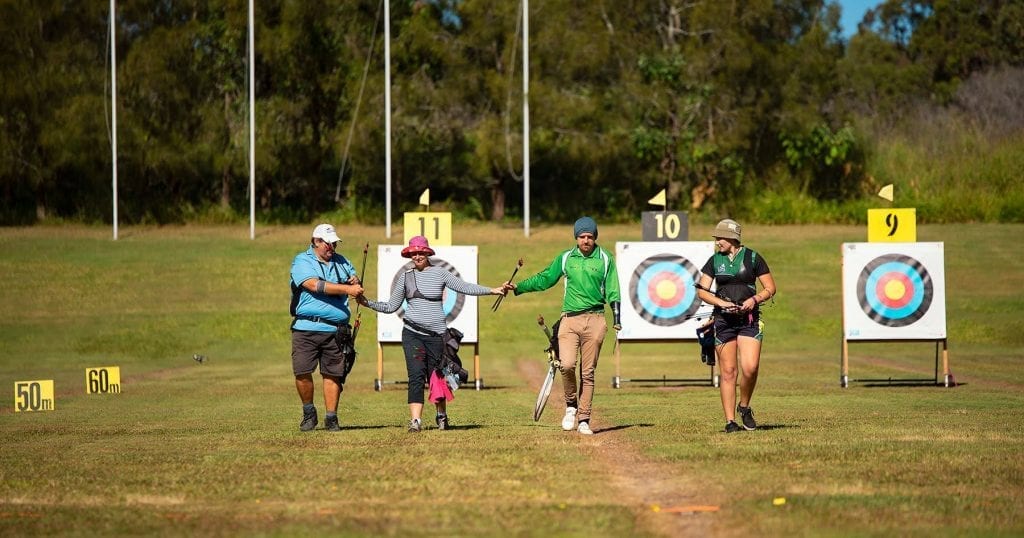
Distancing your target is important. In the Olympics, the standard range is 70 meters, or about 230 feet.
That can be a bit daunting to begin with, so we’re going to give you some basic distances for different levels of skill so you can slowly improve over time.
Follow these, and you should avoid aggravation.
| Skill Level | Target Distance | Reason |
| Newcomer | 12-15 meters (39 ft to 49 ft) | This is where more children begin their archery lessons. You’re training your eyesight and trying to increase your mathematical understanding of variables and how to control them to create a preferred outcome. |
| Novice | 15-25 meters (49 ft to 82 ft) | You’ve been training for a bit, and you’re ready to take a step back. This is a slight push from the newcomer skill level, and doesn’t require additional arcing or a huge shift in stance. Your depth perception will be tested. |
| Advanced | 25-45 meters (82 ft to 148 ft) | You’re getting closer to being a pro. Advanced is when you’re bored with the 25 meter target range, but you still have some work to do on form. You’re nearly doubling the distance to the target; this will show you where your skill level truly is. |
| Intermediate | 45-70 meters (148 ft to 230 ft) | Intermediates don’t mind shooting on misty days, foggy mornings, or any conditions, really. You’ve stuck it out this long, and you will work your way up to Olympic target distances. This is the biggest gap in range distance, and you may be here for a while. This shows you which of your skills need to be fine-tuned just a bit more. |
| Expert | 70-90 meters (230 ft to 295 ft) | Olympian. You’re basically an Olympian. Expert level is where a lot of people peak, because you’re literally shooting targets up to a football field away. Your long-range game is going to be tested like never before, and you will need to be patient with skill improvements. They’ll happen. |
| Bow Master | 90-125 meters (295 ft to 410 ft) | It can take 1-2 years to get to this point, and that’s if you’re consistently training. As a bowmaster, using a longbow isn’t out of the question. You’ll only get so much power out of compounds and recurves at this point, and the sky’s the limit. Over 125 meters, and you’re basically a god. |
Longer distances is not your only marker of skill, only thing everyone is a bit different.
Your physical activity level and hand-eye coordination will greatly impact where you place on distancing when you enter archery, a great option to getting and staying fit.
It’s not uncommon for athlete’s to quickly ascend to the advanced skill level in a few weeks, if your other life experiences have given you a good edge over the short game.
Joining an archery club right at the beginning is also another way to accelerate your skills.
Tips, tricks, and hands-on learning will always beat any online education or video-watching.
A good community will help you through the tougher first step learning curves and skill plateaus, if nothing else, simply by acting as a like minded support system.
Once You Shoot Your First Arrow, You’re Hooked
So what’s stopping you? There’s so much to do, so much to learn, and a mountain of information to absorb.
Archery is more than just sinking an arrow into a target or a hay bale: it’s about turning your body into a precision instrument of absolute patience, and transferring your focus into real-world, applicable results.
It’s a little difficult to explain, but after your second or third time out on the archery training field, you’re going to feel something awaken inside of you.
That’s your inner bow master, and they’re hungry to continue grinding your skills and ascending to new heights.
You’re about to be hooked.

